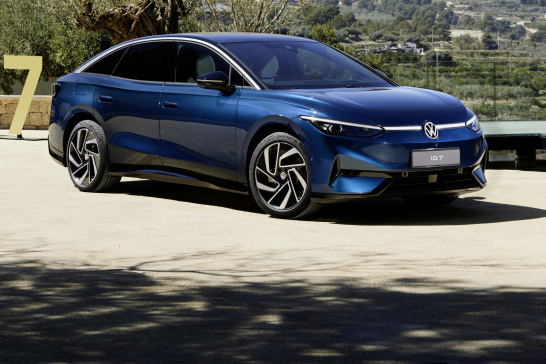The traditional car may have seen its influence atrophy for years, but some manufacturers still believe in it and use it to propel their electric shift. After the Hyundai Ioniq 6 unveiled earlier this year, it’s now Volkswagen’s turn to throw down the gloves on the Tesla Model 3. The ID.7, unveiled last week, is something of a homecoming for the German mark.
At almost 5 meters long, this new hatchback falls close in size to the last generation Passat mid-size sedan, but has a longer wheelbase for interior space. The ID.7 thus positions itself closer in its footprint to a Tesla Model S than a Model 3.
Its design obviously focuses on aerodynamic efficiency, ensuring a drag coefficient of 0.23 Cd, significantly higher than that of the ID.4 crossover (0.27 Cd).
The ID.7 will introduce an all-new electric motor for Volkswagen, which is less energy-intensive and more lively. With its 282 hp, it outclasses the engine driving the rear-wheel-drive ID.4 by 81 hp. This mechanism will be added a 77 kWh battery according to several media. It will be compatible with a maximum charging power of 170 kW. Another 86 kWh battery would be reserved for the European market, but could logically be offered here with a possible two-motor version.
The maximum target range exceeds 482 km, according to the American subsidiary of Volkswagen. The European version targets 700 km when equipped with the largest battery, a high figure explained by the much more optimistic and less realistic measurement protocol, by the same token.
True to its philosophy which has attracted some criticism, the dashboard relies on touch for its controls. Volkswagen has however made some corrections, including the addition of a backlight for the keys under the screen. The interface is also more configurable, allowing the addition of selected tabs on the top.
The Volkswagen ID.7 will go on sale in Canada in 2024. Until then, we’ll have a fuller rundown of the North American version.
